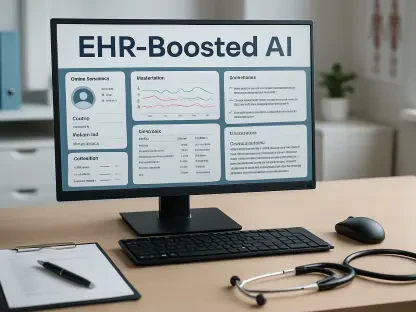In the ever-evolving landscape of healthcare, the rising costs of specialty drugs have placed immense pressure on patients, employers, and insurers alike. Today, we’re sitting down with James Maitland, a renowned expert in healthcare policy and insurance practices, with a deep focus on specialty drug funding and the intricacies of self-insured employer plans in the United States. With years of experience navigating the complexities of alternative funding programs (AFPs) and their impact on the healthcare system, James offers a unique perspective on the challenges and potential solutions in this critical area. Our conversation explores the real-world struggles of patients facing unexpected costs, the controversial role of middlemen in securing drug funding, the ethical dilemmas surrounding these practices, and the broader implications for employers and the future of healthcare affordability.
How do you see the current landscape of specialty drug funding impacting patients who rely on these medications for life-threatening conditions?
The landscape is incredibly challenging for patients. Specialty drugs, which often treat complex or rare conditions like cardiac sarcoidosis or cancer, are astronomically expensive, sometimes costing tens of thousands of dollars per dose. For patients, the expectation is that their health insurance—something they’ve paid hefty premiums for—will cover these costs. But with the rise of self-insured employer plans and alternative funding programs, we’re seeing more cases where coverage is either denied or carved out entirely. This leaves patients facing massive out-of-pocket bills or delays in treatment, which can be catastrophic. I’ve come across stories of individuals skipping critical doses because they can’t afford the next infusion, and the health consequences are severe—disease progression, hospitalizations, or worse. It’s a heartbreaking gap between what patients need and what the system currently provides.
What are alternative funding programs, and how did they emerge as a solution for employers struggling with drug costs?
Alternative funding programs, or AFPs, are essentially middlemen that promise to help self-insured employers manage the skyrocketing costs of specialty drugs. They emerged over the past decade as drug prices, especially for biologics and other specialty medications, surged—climbing over 40% in just a few years to around $300 billion annually by 2021. AFPs offer strategies like securing free or discounted drugs through pharmaceutical patient assistance programs, tapping into charities, or even sourcing medications internationally. For employers, particularly smaller or mid-sized ones who self-fund their health plans, this can seem like a lifeline. Self-insured plans mean the employer directly pays for claims, so a single high-cost drug can threaten their financial stability. AFPs step in with the allure of slashing those pharmacy expenses, but the execution often comes at a steep cost to patients and raises serious ethical questions.
Can you explain why self-insured employers are particularly drawn to these programs compared to fully insured plans?
Absolutely. Self-insured employers take on the financial risk of healthcare claims themselves, often with an insurer acting only as an administrator. Unlike fully insured plans where employers pay premiums to an insurer who then covers claims, self-insured plans have more flexibility in design but also more exposure to high costs. This is especially true for smaller or medium-sized businesses, where just a few employees on expensive specialty drugs can destabilize the entire plan. Data shows over 60% of U.S. workers are under self-insured plans, and for these employers, AFPs pitch a way to mitigate risk without reverting to a fully insured model, which can be more expensive upfront. Additionally, self-insured plans face less regulation, so they can experiment with cost-saving tactics like excluding specialty drugs from coverage—something AFPs often facilitate. It’s a gamble, though, because the promised savings don’t always materialize, and the patient fallout can be significant.
What are some of the biggest risks or downsides you’ve observed with the way AFPs operate in the healthcare system?
The downsides are numerous and often hit patients the hardest. One major issue is treatment delays—surveys show patients waiting an average of 68 days to get medications through AFPs, and I’ve seen reports of delays stretching up to two years for conditions like hemophilia. Even a short delay can lead to health crises, especially for chronic or life-threatening illnesses. Then there’s the ethical gray areAFPs often apply to patient assistance programs meant for uninsured or underinsured individuals on behalf of insured patients, which many pharmaceutical companies argue diverts resources from those truly in need. There are also concerns about privacy, as AFPs handle sensitive patient data, and practices like international drug sourcing raise safety and legality questions since these drugs aren’t always FDA-approved. Lastly, the savings for employers aren’t guaranteed—some studies show less than half see reduced claims, and AFP fees, often 20-45% of savings, can eat into any gains. It’s a system that often prioritizes cost over care.
How do you think the involvement of AFPs affects the relationship between pharmaceutical companies and other stakeholders like employers or insurers?
AFPs create a lot of tension in these relationships. Pharmaceutical companies design patient assistance programs as a safety net for the most vulnerable, not as a loophole for insured patients to get free drugs while middlemen profit. When AFPs exploit these programs, it frustrates pharma companies, leading some to tighten eligibility or outright ban AFP-involved applications. This can strain their commercial ties with payers and employers, who rely on negotiated rebates and formulary agreements to manage costs. For insurers and pharmacy benefit managers, especially the smaller ones, AFPs can be both a partner and a threat—some collaborate for shared savings, but the big players often resist because specialty drugs are a huge profit driver. Overall, AFPs disrupt the delicate balance of cost-sharing and access that stakeholders have worked to establish, often leaving patients caught in the crossfire as trust erodes across the board.
What are your thoughts on the ethical concerns surrounding AFPs, especially when it comes to practices like applying to assistance programs or sourcing drugs internationally?
The ethical concerns are profound and multifaceted. Applying to assistance programs on behalf of insured patients feels like a misuse of resources intended for the most disadvantaged. It’s not just about bending rules; it’s about potentially depriving someone in desperate need of help while AFPs charge hefty fees for facilitating this. International sourcing is even more troubling—while it might lower costs, the drugs often bypass FDA oversight, raising risks of counterfeit or substandard products. I’ve heard of cases where patients received medications with foreign labeling, and providers couldn’t verify their legitimacy without significant effort. There’s also the issue of transparency; patients aren’t always fully informed about how their data is used or the risks they’re taking. To me, these practices highlight a deeper flaw in our system where profit motives can overshadow patient safety and fairness, and that’s something we urgently need to address.
How do you see the role of government or regulatory bodies in addressing the challenges posed by AFPs and specialty drug funding?
Government and regulatory bodies have a critical role to play, but progress has been slow. The Department of Labor oversees most self-insured plans, and there’s growing pressure to clarify whether specialty drug exclusions violate Affordable Care Act mandates on essential health benefits. Recent calls from Congress to investigate AFPs signal awareness, but actionable policy is lagging. The FDA has expressed concern over international sourcing, labeling it as largely illegal for personal use, yet enforcement is inconsistent. The Federal Trade Commission could tackle deceptive practices or unfair fees, but we’ve seen little movement there. States like Louisiana are starting to study AFPs, but their jurisdiction is limited. What’s needed is a coordinated federal effort—clear guidelines on assistance program use, stricter oversight of drug importation, and perhaps incentives for employers to maintain coverage without relying on risky middlemen. Without that, patients will continue to bear the brunt of regulatory gaps.
What is your forecast for the future of specialty drug funding and the role of AFPs in the healthcare system?
I think we’re at a crossroads. Specialty drug costs aren’t going away—new therapies like gene treatments can cost millions per dose, and employers, especially self-insured ones, will keep feeling the pinch. AFPs might evolve their tactics, perhaps focusing more on in-house solutions with pharmacy benefit managers or adapting to pharma crackdowns on assistance programs. But I foresee growing pushback—more employers are questioning AFP sustainability, with surveys showing declining interest over recent years. Regulatory scrutiny will likely intensify, especially if patient harm stories gain traction. My hope is that we move toward systemic solutions, like broader price transparency or innovative insurance designs, that address affordability without sacrificing access. If we don’t, AFPs or similar models will persist, and the cycle of cost-shifting and patient risk will continue. It’s a complex puzzle, but solving it starts with prioritizing care over quick fixes.









